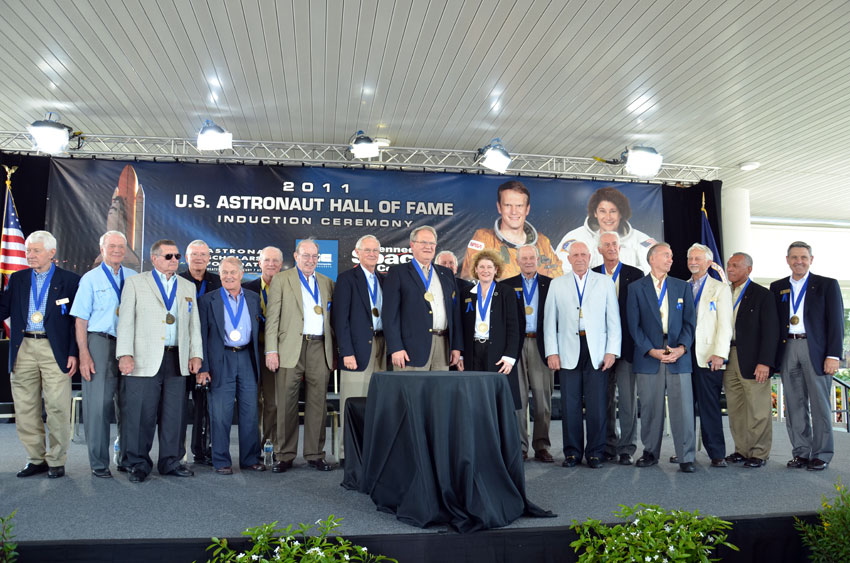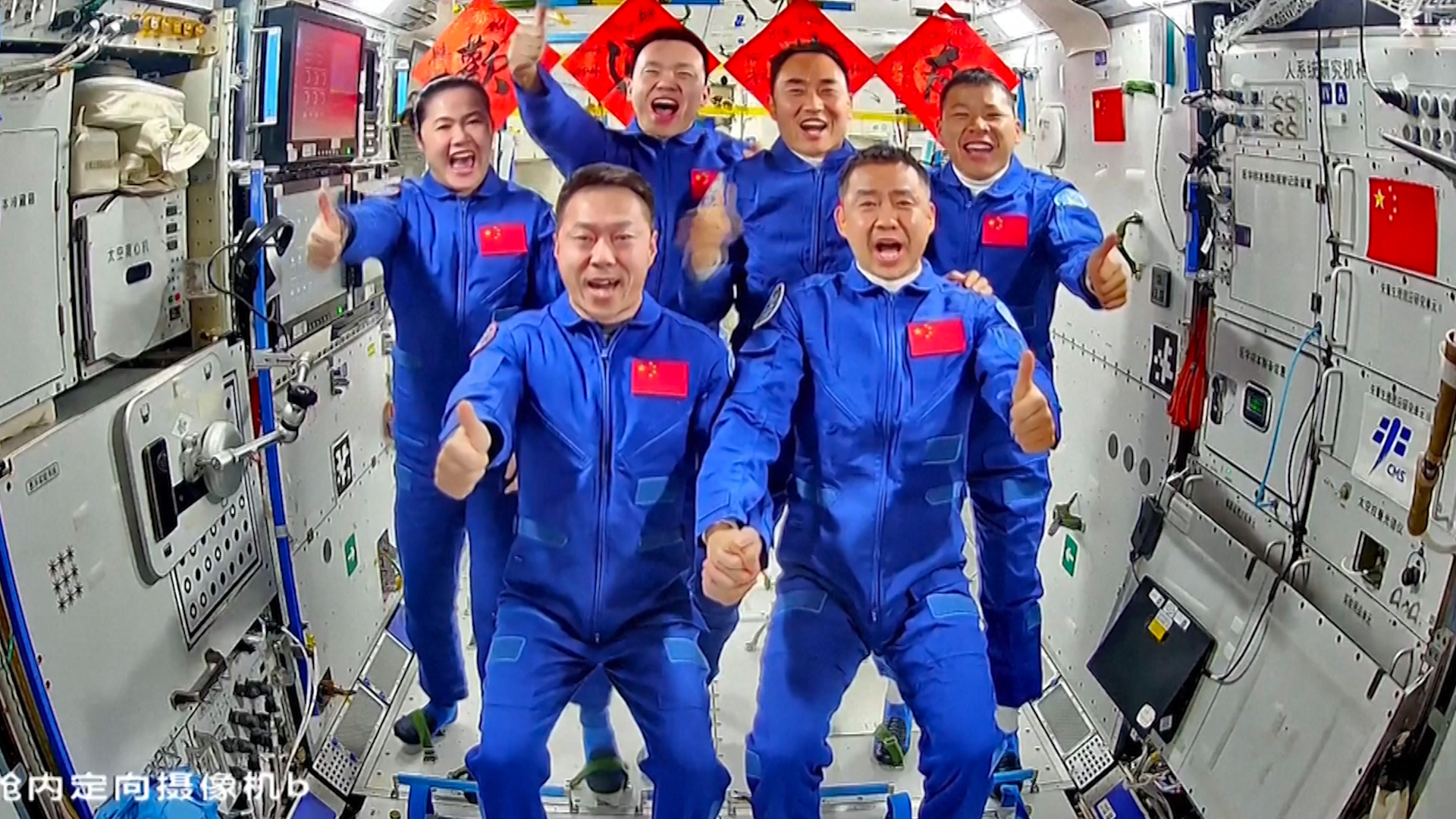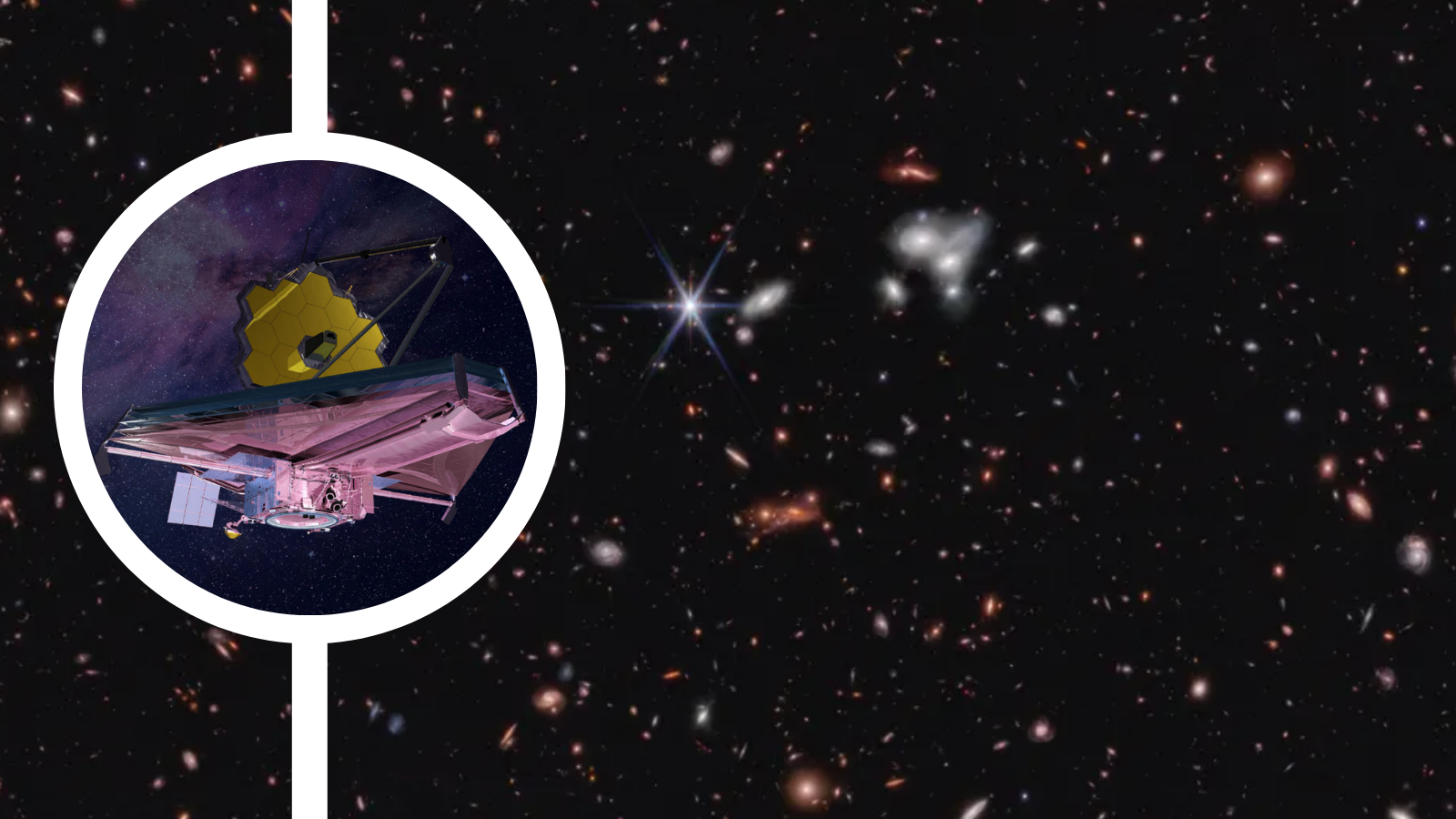Shuttle Commander, Station Spacewalker Join Astronaut Hall of Fame

The U.S. Astronaut Hall of Fame added two more to its ranks Saturday, inducting a space shuttle commander who flew two orbiters' maiden flights and a spacewalker who set a duration record working outside the International Space Station (ISS).
Karol "Bo" Bobko and Lt. Gen. Susan Helms were the guests of honor at the induction ceremony held at NASA's Kennedy Space Center Visitor Complex in Florida, home to the Astronaut Hall of Fame. The event brought together more than 15 of the Hall's 77 previous inductees, including Mercury astronaut Scott Carpenter, moonwalkers Charles Duke and Edgar Mitchell, and first space shuttle pilot Bob Crippen.
Setting the standard — and record — for spacewalks
"It is an incredible honor for me this afternoon to introduce you one of my heroes, Lt. General Susan J. Helms," said NASA Administrator Charles Bolden, who as a former astronaut was also inducted into the Hall in 2006. Helms was the first U.S. military woman to fly in space and recently was appointed the first woman to command Vandenberg Air Force Base in California. [Giant Leaps: Top Milestones of Human Spaceflight]
"Her incredible talent and leadership ability became quite evident to me during her first flight, STS-54 on which she served as an IV, or intravehicular crew member, with the responsibility for overseeing the conduct of the spacewalk on that flight," Bolden recounted for Helms' family, fellow astronauts and the public guests attending the ceremony. "Having trained as an IV crewman myself, I watched in awe as she set the standard for IV crew members by the manor in which she perfectly and deftly choreographed the spacewalk."
"Under her direction, we learned many lessons that would prove key to the construction of the International Space Station," said Bolden.
Four space shuttle missions later, Helms became the first woman to live aboard the station. During her 163 days as a member of the ISS Expedition 2 in 2001, she and fellow NASA astronaut Jim Voss set a world record, making the longest spacewalk to date. For 8 hours and 56 minutes, Helms and Voss worked to install hardware on the outside of the U.S. Destiny laboratory. [Most Extreme Human Spaceflight Records]
Get the Space.com Newsletter
Breaking space news, the latest updates on rocket launches, skywatching events and more!
Commander 'cool under pressure'
Like Helms, Bobko also set Air Force records, becoming the first graduate of the Air Force Academy to be selected to train as an astronaut and to fly in space. Chosen for the Air Force's Manned Orbiting Laboratory, he transferred to NASA's astronaut corps in 1969 after the military space station program was canceled.
Ultimately, Bobko had to wait 14 years to make his first of three spaceflights.
"Bo loved spaceflight. He wanted everyone working with him to enjoy it as much as he did and he knew from experience that despite delays, a first flight is worth waiting for," said 2007 inductee Jeffrey Hoffman. Hoffman flew with Bobko on STS-51D, between Bobko's two other space shuttle missions, the first flights of Challenger and Atlantis.
"Bo is cool under pressure, and I saw this on numerous occasions, the first of which was right after main engine cutoff," said Hoffman, recounting a hydrogen fuel dump procedure that Bobko and his STS-51D pilot Don Williams were tasked with performing after space shuttle Discovery reached orbit.
The dump immediately caused the orbiter to roll about 90 degrees out of attitude and led to almost constant firing of its control jets. "People who have experienced these know how loud they are," said Hoffman. "I mean I was a rookie down on the middeck and I thought I was in the middle of an artillery barrage."
"Don's voice from up on the flight deck seemed about an octave higher as he asked Bo quickly 'Should we shut the valves!?!' Bo just said, perfectly calmly, 'Nah, let's leave them open and see what happens.'"
"Of course we survived," said Hoffman, "and I think we succeeded in demonstrating that this was maybe not an optimum technique for dumping the hydrogen."
Continue reading at collectSPACE.com for a Q&A with new Astronaut Hall of Fame inductees Karol "Bo" Bobko and Lt. Gen. Susan Helms.
You can follow collectSPACE on Twitter @collectSPACE and editor Robert Pearlman @robertpearlman. Copyright 2011 collectSPACE.com. All rights reserved.
Join our Space Forums to keep talking space on the latest missions, night sky and more! And if you have a news tip, correction or comment, let us know at: community@space.com.

Robert Pearlman is a space historian, journalist and the founder and editor of collectSPACE.com, a daily news publication and community devoted to space history with a particular focus on how and where space exploration intersects with pop culture. Pearlman is also a contributing writer for Space.com and co-author of "Space Stations: The Art, Science, and Reality of Working in Space” published by Smithsonian Books in 2018.In 2009, he was inducted into the U.S. Space Camp Hall of Fame in Huntsville, Alabama. In 2021, he was honored by the American Astronautical Society with the Ordway Award for Sustained Excellence in Spaceflight History. In 2023, the National Space Club Florida Committee recognized Pearlman with the Kolcum News and Communications Award for excellence in telling the space story along the Space Coast and throughout the world.










